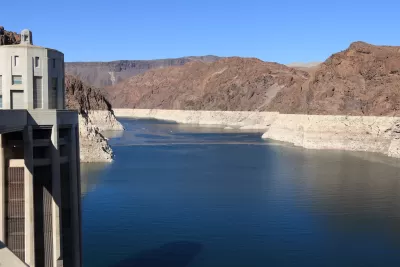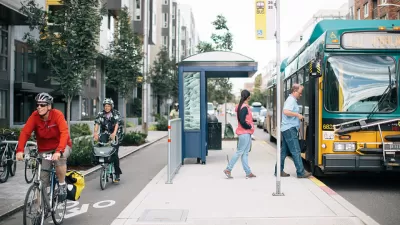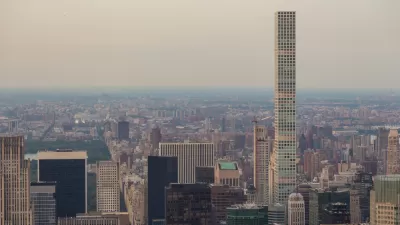Higher demand for electricity and lower capacity for production due to more intense heat waves are straining the power grid and causing concern for future energy production.

This year's heat wave, writes Jonathan Thompson, exposed critical vulnerabilities in our infrastructure. And "the heat’s biggest — and perhaps most consequential — infrastructure victim was the vast electricity grid that powers nearly every aspect of modern life."
"Extreme weather exacerbated by climate change can mess with the grid in any number of ways: Cold can freeze gas lines, while hurricanes topple transmission towers. But heat, particularly when combined with hydropower-depleting drought, has an especially deleterious effect, wreaking havoc on the power system just when the warmer climes need it most."
By their very existence, "power plants — the fossil-fueled 'heart' of the grid — make climate change worse and the planet even warmer, creating a feedback loop that resembles a gigantic electrical monster swallowing its own tail," Thompson writes. In addition, the hot air blown out of homes by air conditioners "actually exacerbates the urban heat island effect" and "raises the ambient temperature, increasing the need for air conditioning" in a vicious cycle. Adding to the problem, hydroelectric dams, which supply roughly 10 percent of U.S. power, lose generating capacity as their water levels drop "due to reduced flows and heat-induced evaporation." Today, reservoirs across the West–and their accompanying hydroelectric dams–are at dangerously low levels.
"The best way to avoid a heat-caused collapse of the grid," says Thompson, "is to slow human-caused climate change by cutting carbon emissions. That requires decarbonization of the grid by replacing fossil fuels with clean energy sources and–just as important–an overall reduction in energy use."
FULL STORY: Climate change wreaks havoc on the electricity grid

Study: Maui’s Plan to Convert Vacation Rentals to Long-Term Housing Could Cause Nearly $1 Billion Economic Loss
The plan would reduce visitor accommodation by 25,% resulting in 1,900 jobs lost.

North Texas Transit Leaders Tout Benefits of TOD for Growing Region
At a summit focused on transit-oriented development, policymakers discussed how North Texas’ expanded light rail system can serve as a tool for economic growth.

Why Should We Subsidize Public Transportation?
Many public transit agencies face financial stress due to rising costs, declining fare revenue, and declining subsidies. Transit advocates must provide a strong business case for increasing public transit funding.

How to Make US Trains Faster
Changes to boarding platforms and a switch to electric trains could improve U.S. passenger rail service without the added cost of high-speed rail.

Columbia’s Revitalized ‘Loop’ Is a Hub for Local Entrepreneurs
A focus on small businesses is helping a commercial corridor in Columbia, Missouri thrive.

Invasive Insect Threatens Minnesota’s Ash Forests
The Emerald Ash Borer is a rapidly spreading invasive pest threatening Minnesota’s ash trees, and homeowners are encouraged to plant diverse replacement species, avoid moving ash firewood, and monitor for signs of infestation.
Urban Design for Planners 1: Software Tools
This six-course series explores essential urban design concepts using open source software and equips planners with the tools they need to participate fully in the urban design process.
Planning for Universal Design
Learn the tools for implementing Universal Design in planning regulations.
Ascent Environmental
Borough of Carlisle
Institute for Housing and Urban Development Studies (IHS)
City of Grandview
Harvard GSD Executive Education
Toledo-Lucas County Plan Commissions
Salt Lake City
NYU Wagner Graduate School of Public Service





























